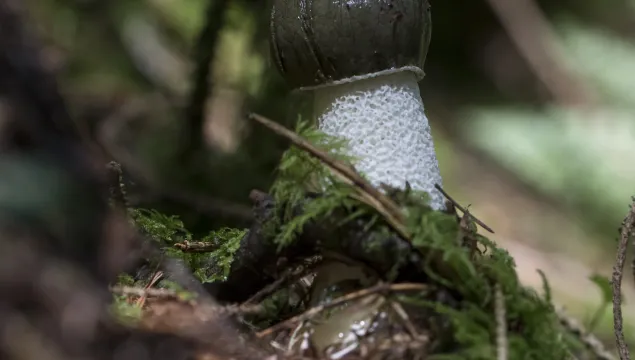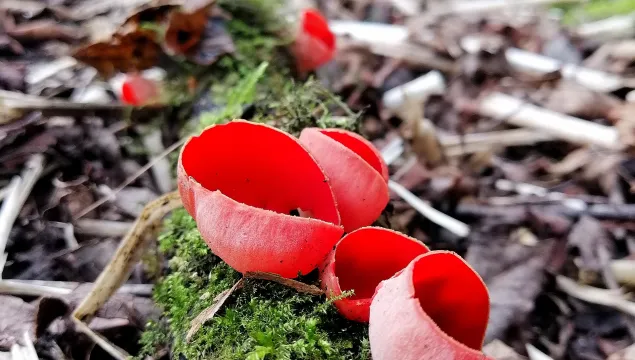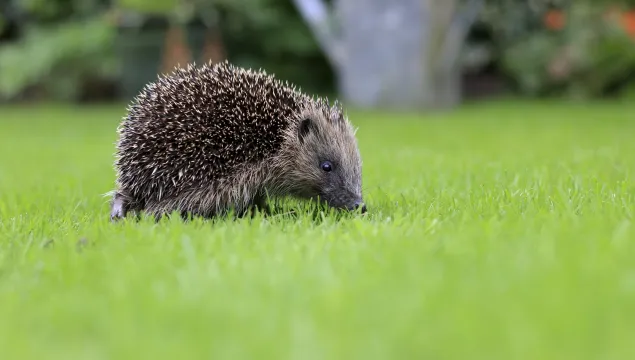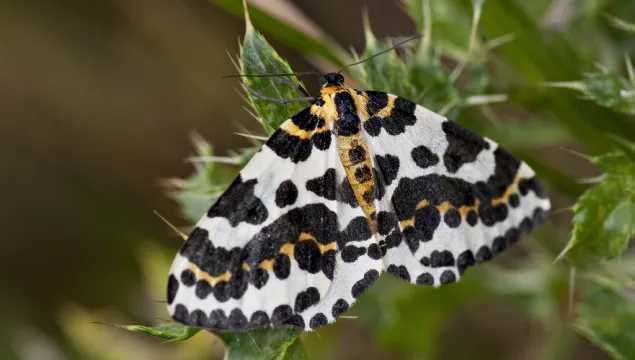
Stinkhorn fungus
The stinkhorn has an unmistakeable and intense stench that has been likened to rotting meat. Its appearance is also very distinctive: a phallic, white, stem-like structure, with a brown, bell-shaped head.

The stinkhorn has an unmistakeable and intense stench that has been likened to rotting meat. Its appearance is also very distinctive: a phallic, white, stem-like structure, with a brown, bell-shaped head.

As its name suggests, the scarlet elfcup is a bright red, cup-shaped fungus. It is widespread, but scarce, and can be found on fallen twigs and branches, in shady, damp places.

Considered a gardener’s best friend, hedgehogs will happily hoover up insects roaming in vegetable beds. Famously covered in spines, hedgehogs like to eat all sorts of bugs and crunchy beetles. They are most active at night and hibernate through winter.

The magpie is a distinctive moth with striking black and yellow spots on white wings. It is a frequent garden visitor, but also likes woodland, scrub and heathland.
Selfheal is a low-growing, creeping plant that likes the short turf of grasslands, roadside verges or even lawns. Its clusters of violet flowers appear in summer.
The pungent, rotten smell of Black Horehound makes this medium-sized plant of waste ground and roadside verges stand out from the crowd.
As the bluebells fade, yellow archangel takes its turn to impress, with golden-yellow flowers carpeting our ancient woodlands.
The unpleasant, astringent smell of Hedge woundwort makes this medium-sized plant of woodlands, hedgerows and roadside verges stand out from the crowd.
Despite the family it's from, White dead-nettle does not sting. It displays dense clusters of white flowers in whorls around its stem, and can be found on disturbed ground, such as roadside verges.
Despite the family it's from, red dead-nettle does not sting. It displays dense clusters of pinky-red flowers in whorls around its stem, and can be found on disturbed ground, such as roadside verges.
Despite its name, Ground-ivy is actually a member of the dead-nettle family. It is a clump-forming, aromatic plant that likes woodlands, hedgerows and damp places.
The delicate, tube-like, violet-blue flowers of Skullcap bloom from June to September in damp places, such as marshes, fens, riverbanks and pond margins.